Mercury is a toxic heavy element, which contaminates air, land, and water, thus posing environment and human health-related threats to the ecological system. Considering the adverse ecological effects, there is an urgent need to design and develop strategic tools to detect a broader spectrum of toxic elements in different environments. The development of point-of-care tools, e.g., sensor-based devices offers a noteworthy solution to detect and monitor real-time generation or release of environmentally-related toxic elements from different sectors, even with or without partial treatments. For a first-hand estimate, a qualitative method (colorimetric) for detection of mercury could suffice. Benefiting from the colorimetric recognition methodology, herein, we developed a new system (2-(5-bromothiazol-2-yl)-3', 6'-bis(diethylamino)spiro[isoindoline-1, 9' xanthen]-3-one) for the detection of mercury ions. The newly developed chemical sensor is composed of a fluorescent part (rhodamine b) and a binding site (2-amino-5-bromothiazole). A highly selective and sensitive response accompanied by visual color change (colorless to pink) towards Hg2+ was observed among miscellaneous metal cations. This colorimetric change confirmed that the coordination complex exists as spirocyclic ring opened derivative of rhodamine moiety. Furthermore, the binding affinity and detection limit was also calculated from the absorbance and emission data. The calculated values are in the order of 4.72 × 104 M-1 and 6.9 μM, respectively. In addition, the results reveal that the complex between the chemical sensor (S) and Hg2+ is reversible in the presence of ethylenediaminetetraacetate (EDTA2-). Finally, the newly developed sensor S was employed to detect Hg2+ in the wastewater. The fluorescence intensity was measured at 583 nm with S followed by spiking with Hg2+ at different concentrations and related linearly. In summary, taken together all the properties suggest that the newly developed sensor might display great potential in the field of environmental monitoring of toxic elements.
1.
Introduction
In a series of works [1,2], Kim and his collaborators introduced the following chemotaxis model
where u is the bacterial density and w is the concentration of nutrient. d≥0 is the diffusion rate of nutrient. κ(w)≥0 is the consumption rate. Typical examples of κ(w) include κ(w)=wm with m≥0.
System (1.1) is an alternative model to describe the propagation of traveling band of bacteria observed in the experiment of Adler [3]. Compared with the classical Keller-Segel system [4], this model is rigorously derived from the notion of "metric of food", and brings the theory of Riemannian geometry to the field of chemotaxis. Choi and Kim [1] have proved that system (1.1) with d=0 can generate traveling bands and traveling fronts under various assumptions on κ(w). They also generalized their results of [1] to the models with porous medium diffusion for the bacterial density, and showed that there exist compactly supported traveling waves for chemotaxis. Ahn, Choi and Yoo [5] proved the global existence of strong solutions of Cauchy problem of system (1.1) if the initial value of w has positive lower bound. Very recently, they [6] have generalized this result to the case where w, with infinite initial mass, can be zero at spatial infinity.
In this paper, we are interested in the existence and stability of spiky patterns to system (1.1). We assume that the consumption rate is linear for simplicity, and write system (1.1) as
We shall consider the system in the half-space R+=[0,∞), with the following initial value
and boundary conditions
where b>0 is a constant. That means we prescribe no-flux boundary condition for the bacterial density and saturated boundary condition for the oxygen. This kind of boundary conditions have also been used in a chemotaxis-fluid model to describe the formation of concentration patterns for aerobic bacteria observed in the experiment of [7].
System (1.2) is actually a chemotaxis model with signal-suppressed motility. In other words, the diffusion rate of the bacterial density is monotonically decreasing as the concentration of the signal increases. There are several analytical works for the chemotaxis model of self-aggregation type with signal-suppressed motility in bounded domains. See [8,9] for the global existence of classical solutions if the motility function satisfies the power law, [10,11] for the existence of critical mass generating blowup if the motility is an exponential function, [12] for the formation of spiky patterns. In contrast, system (1.2) is of consumption type. That is the chemical signal w is consumed by the bacteria u. It turns out that such two types of chemotaxis model may exhibit different dynamics. Indeed, one can easily verify (following the argument of Proposition 2.1 of [13]) that if b=0 or w satisfies homogeneous Neumann boundary in the half space, then system (1.2) only has constant steady states, and no pattern exists. In other words, it is the nonhomogenous boundary condition that generates spiky patterns. Such phenomenon is quite different from the solution structures of chemotaxis model of self-aggregation type for which the intrinsic mechanics of chemotactic interaction generates spiky patterns (see [14,15]). Furthermore, Tao [16] showed that, under homogeneous Neumann boundary conditions in bounded domains, the multidimensional classical chemotaxis model of consumption type has a unique global bounded solutions under suitable assumptions on the initial data w0 and the chemotactic coefficient. In particular, the global existence or blow-up of solutions is independent of the initial data u0. This study indicates that the chemotaxis model of consumption type posses another different property from the one of self-aggregation type since the latter has the well-known critical mass on u0 for blow-up in dimension 2. This work subsequently led to various generalizations. Baghaei and Khelghati [17] improved the results of [16] to a larger set of w0 and chemotactic coefficient. Frassu and Viglialoro [18] further generalized the works of [16] to the models with indirect signal consumption. Recently, Li and Zhao [19] and Wang [20] proved that under homogeneous Neumann boundary conditions, the chemotaxis-consumption system with regular signal-dependent motility also has global bounded solutions under some assumptions on w0. It is worth mentioning that for the chemotaxis-consumption system with logarithmic sensitivity, Winkler [21,22] introduced the notion of renormalized solutions to handle the singularity in the study of global existence of large solutions.
There are some studies on the dynamics of classical chemotaxis model of consumption type with nonhomogeneous boundary conditions. In the one dimensional case, Hong and Wang [23] studied the stability of steady state to the minimal model with Dirichlet boundary condition for the nutrient in bounded domains; Carrillo, Li and Wang [13] obtained the stability of steady state to the model with constant motility and logarithmic singular sensitivity in the half space. In the multidimensional case, Braukhoff and Lankeit [24] proved the existence and uniqueness of steady state to the minimal model with nonhomogeneous Robin boundary condition, while Lee, Wang and Yang [25] obtained similar results for the minimal model with Dirichlet boundary condition, and they further analyzed the boundary layer phenomena. Recently, Fuest, Lankeit and Mizukami [26] further showed the stability of steady state for the minimal parabolic-elliptic model on the base of the works on the steady state obtained in [24].
One can observe from the boundary condition w(+∞,t)=0 that, in contrast with the models studied in the above mentioned works, system (1.2) is actually a chemotaxis model with singular sensitivity and singular motility. In this paper, we shall develop some new strategies to overcome analytical difficulties caused by the coupling of nonhomogenous boundary condition and singularities. And we obtain the following results:
(1) system (1.2)–(1.4) admits a unique steady state (U,W), and U→λδ(x) as d→0, where δ(x) is the Dirac function and λ is the initial bacterial density, i.e., λ=∫∞0u0(x)dx;
(2) this spiky steady state (U,W) is asymptotically stable in the sense that if the initial data (u0,w0) is a small perturbation of (U,W) in some topology, then the solution (u,w) will converge to (U,W) time asymptotically.
Following the argument of [13], one can easily show that result (1) holds. The aim of this paper is to show the nonlinear stability of steady state. The main difficulty of the problem is the presence of two types of singularities in the model: one is the logarithmic singularity of the sensitivity function, the other is the inverse square singularity of the signal-dependent motility. As in the arguments of [13,27,28,29], we relegate the former singularity by using the Cole-Hopf transformation to a nonlinear nonlocal term. However, this transformation is not powerful enough to settle the latter singularity. We shall develop new ideas to deal with the challenge of inverse square singularity of motility. Indeed, we first reformulate the problem in the perturbation variables using the method of anti-derivative, to classify the strength of singularity. Then we construct an appropriately approximate system, which retains some key structures of the original system, to establish the local well-posedness of the perturbation equations. In this step we will first prove that the approximate system is locally well-posed in a time interval [0,T], where T is independent of the artificial parameter ε; and then pass to the limit ε→0+ by using the Aubin-Lions compactness lemma and a diagonal argument. Finally, to close the a priori estimate that is necessary to obtain the global well-posedness of the perturbation equations (or the asymptotic stability of steady state), we establish a new weighted elliptic estimate upon the weighted energy estimates where the weights are artfully chosen according to the nice structures of the equations.
The paper is organized as follows. In Section 2, we present some elementary calculations and state the main results of this paper. In Section 3, we derive the perturbation equations, and establish the local well-posedness theory. Section 4 is devoted to the proof of nonlinear stability of the spiky steady state.
2.
Preliminaries and main results
In this section, we first show the existence of spiky steady state to the system (1.2)–(1.4). Then we present some elementary calculations and state the main results on the asymptotic stability of such spike profile.
Owing to the zero-flux boundary condition for u, the mass of bacterial should be conserved. In other words,
Thus, the steady state of (1.2) satisfies
with boundary conditions
Observe that when W>0, the steady state equations (2.2) and (2.3) is actually the m=χ=1 case of the chemotaxis model studied in [13]. Thus, according to Proposition 2.1 and Theorem 2.1 of [13], we have the following result.
Proposition 2.1. (1) The system (2.2) and (2.3) has a unique smooth solution (U,W) satisfying U′<0, W′<0, and
(2) U concentrates as a spike at x=0 as d→0+, i.e.,
We next pay attention to the asymptotic stability of (U,W) to system (1.2)–(1.4). Because the chemical concentration w(x,t) has vacuum end state at x=+∞, there are two types of singularities in system (1.2): one is the singular sensitivity wxw, the other is the singular motility w−2. To handle the former singularity, motivated by the works of [13,27,28,29], we employ the following Cole-Hopf type transformation
which along with the boundary condition w(0,t)=b gives
Hence we transform system (1.2) into a nonlocal system of viscous conservation laws as follows
where v0=−w0xw0. One may observe that the new system (2.7) still has singular motility near x=+∞ for the bacterial mass u. In this paper, we shall develop some novel ideas to solve this challenging problem.
We next determine the boundary conditions of (2.7). The second equation of (1.2) gives (lnw)t=−dvx+dv2−u. Because b is a constant, for smooth solutions (lnw)t=0 at x=0, it then follows that
Denote by (U,V)(x) the steady state of (2.7), where U(x) is given in (2.4). Then we have
It is easy to see that
Because it is expected that v(x,t)→V(x) as t→∞, it is natural to impose v(+∞,t)=0. Therefore, the boundary conditions of (2.7) are
We also need some notation. Hk denotes the usual Sobolev space whose norm is abbreviated as ‖f‖2k:=∑kj=0‖∂jxf‖2 with ‖f‖:=‖f‖L2(R+), and Hkω is the weighted Sobolev space of measurable function f such that √ω∂jxf∈L2(R+) with norm ‖f‖ω:=‖√ωf‖L2(R+) and ‖f‖2k,ω:=∑kj=0‖√ω∂jxf‖2 for 0≤j≤k.
We are now ready to state the main results.
Theorem 2.1 (Local well-posedness). Let (U,V) be the steady state of (2.7) and (2.8). Assume that the initial perturbation around (U,V) satisfies ϕ0(∞)=ψ0(∞)=0, where
Suppose that
Then there is a time T>0, such that the system (2.7) and (2.8) has a unique strong solution (u,v) on R+×(0,T), satisfying
where ω1=U and ω2=1U.
Theorem 2.2 (Global well-posedness). Assume that the conditions of Theorem 2.1 hold, and that there exists a constant δ0>0 such that,
where ω3=1U2 and ω4=1U3. Then the system (2.7) and (2.8) has a unique global solution (u,v)(x,t) satisfying
Moreover, the following asymptotic convergence hold:
and
Using the Cole-Hopf transformation (2.5), we transfer Theorem 2 to the original system (1.2)–(1.4).
Theorem 2.3. Let (U,W) be the unique steady state of (1.2)–(1.4). Assume that the initial perturbation satisfies ϕ0(∞)=ψ0(∞)=0, where
Suppose that there is a constant δ0>0 such that
Then the system (1.2)–(1.4) has a unique global solution (u,w)(x,t) satisfying
Moreover, we have the following asymptotic convergence:
and
Remark 2.1. We provide both the pointwise convergence and L1 convergence for the solution. In contrast with the result of [6] where it is required infinite initial mass for w, our Theorem 2.3 implies that the chemical concentration w carries finite mass for all time.
Remark 2.2. In view of its biological background, it is also interesting to study the stability of traveling waves to system (1.1). However, when we apply our argument to that problem, the perturbation equation involves several unfavorable terms which are sophisticated to estimate. We leave this problem for the future study.
Remark 2.3. We shall remark that the steady state (U,W) obtained in Proposition 2.1 is a smooth solution of system (2.2) and (2.3), and it satisfies U(x)>0 and W(x)>0 for any x∈[0,+∞). In other words, U(x) only vanishes at the far field, and the singularity only happens at x=+∞. This fact enables us to take 1U as the key weight function, and derive the stability of steady state in specific weighted space.
3.
Local well-posedness
This section is devoted to proving Theorem 2.1, i.e., the local well-posedness of system (2.7) and (2.8). We first reformulate the problem in the perturbation variables using the method of anti-derivative. Because the perturbation system still has a singularity, we have to construct an appropriately approximate system. Then we prove that the approximate system is locally well-posed in a time interval [0,T] where T is independent of the artificial parameter ε. After establishing the uniqueness of solutions in weighted Sobolev space, we finally derive the local well-posedness of system (2.7) and (2.8) by the Aubin-Lions compactness lemma and a diagonal argument.
3.1. Reformulation of the problem
The steady state (U,V) of system (2.7) and (2.8) satisfies
where the boundary conditions are given by
Integrating (3.1) in x, we have
Observing that (u,v) satisfies the zero-flux boundary condition, the perturbation around (U,V) should have the conservation of mass. That is
Then we could adopt the method of anti-derivative to decompose the solution (u,v) as
which implies
Substituting (3.5) into (2.7), integrating the equations in x, noting w=e−ψW, and using (3.1), we have
which is equivalent to
The initial value of (ϕ,ψ) is given by
with
and the boundary condition satisfies
We shall remark that the anti-derivative for v could remove the nonlocality of the problem, but it can not handle the singularity of the motility. Indeed, to overcome the difficulties caused by the singular motility (or degenerate relaxation), we construct an approximate system of (3.6) as
where ε>0 is a constant, Wε=W+ε and Vε=WWε⋅V. Here we also approximate V by Vε so that system (3.10) retains the key structure of system (3.6):
Indeed, recalling that V=−WxW, a direct calculation leads to
3.2. Local well-posedness for the approximate system
Employing the principle of contraction mapping (e.g., see [30]), one could easily get the local well-posedness for the approximate system on a time interval that may depend on ε.
Proposition 3.1. Assume that the initial data (ϕ0,ψ0) satisfies
Then, there exists a constant T>0 depending on ε, ‖ϕ0‖H1 and ‖ψ0‖H1 such that the approximate system (3.10) with (3.7)–(3.9) has a unique local strong solution on R+×[0,T] satisfying
Proof.
By Proposition 3.1, there exists a time T1>0 such that the system (3.10) with (3.7)–(3.9) has a unique solution (ϕ,ψ) on (0,T1) that satisfies ϕ∈C([0,T];H1)∩L2((0,T);H2). Starting at T1, applying Proposition 3.1 again, we can extend the solution (ϕ,ψ) to another time T2=T1+t1, where t1>0 depends on ε, ‖ϕ(T1)‖H1 and ‖ψ(T1)‖H1. Continuing this procedure, we get two sequences {tj}∞j=1 and {Tj}∞j=1, where tj depends on ε, ‖ϕ(Tj)‖H1 and ‖ψ(Tj)‖H1, such that the solution (ϕ,ψ) exists on the time interval (0,Tj), and satisfies
Take the maximal existing time T∗ as T∗=T1+∑∞j=1tj. Then the solution can be extended to (0,T∗) and satisfies
for any T∈(0,T∗). Clearly, if T∗<∞, then
However, one can not use Proposition 3.1 to derive the local well-posedness of system (3.6) by directly passing to the limit ε→0, since the time interval [0,T] obtained in Proposition 3.1 depends on ε. In the following, we have to establish appropriate a priori estimates that are independent of ε.
Proposition 3.2. Assume that (ϕ0,ψ0) satisfies
Then there exists a constant T0>0 independent of ε, such that the approximate system (3.10) with (3.7)–(3.9) has a unique solution on R+×[0,T0], which satisfies
and
Proof. Thanks to (3.12), it suffices to establish a priori estimate in the weighted Sobolev space that is independent of ε. To achieve this, we multiply the first equation of (3.10) by ϕWε, and integrate the resultant equation over (0,t)×(0,+∞) to get
By (3.11) we have
It follows from Young's inequality that
Using the inequality
we get
Combining (3.17) and (3.19), one obtains
Multiplying the second equation of (3.10) by ψ, we get
By Young's inequality, we have
and
Moreover, using (3.18) yields
Now substituting (3.22) and (3.23) into (3.21), we have
Combining (3.20) with (3.24) yields
Multiplying the first equation of (3.10) by ϕxxWε, one gets
where we have used the first equation of (3.10) in the second equality. As in (3.19),
From Young's inequality, it follows that
and
Substituting (3.27)–(3.30) into (3.26) leads to
Multiplying the second equation of (3.10) by ψxxWε, one gets
By Young's inequality,
Moreover, integration by parts leads to
The boundary term can be estimated as
where δ is a small constant. It follows from (3.18) that
In view of the second equation of (3.10), it holds:
where
and by (3.18),
Then choosing δ≪1, by (3.31), we get
Combining (3.31) with (3.33), we have
Multiplying (3.25) by K≫1 and combing the resultant inequality with (3.34), we have
which further gives
Set H(t):=∫∞0(Wεϕ2+ψ2+Wεϕ2x+ψ2xWε)dx. Noting
we are led to
where H0=∫∞0(Wεϕ20+ψ20+Wεϕ20x+ψ20xWε)dx. It is easy to verify that when ¯T0 satisfies
then
Indeed, consider
where M=Ce12√H0, then
Since (1−x)−12<1+x for x∈(0,12), it holds
for t small. Thus, when we take ¯T0 satisfying (3.36), we have (3.37).
If we take
then H1>H0 and H2<H0. Now we take T0 satisfying
Clearly, T0 is independent of ε, and
Thanks to Proposition 3.1, (3.13) and (3.38), for any 0<ε<1, system (3.10) with (3.7)–(3.9) has a unique solution (ϕ,ψ) on R+×(0,T0) satisfying (3.14). The other desired estimate (3.15) follows from (3.38) and an integration of (3.35) in t.
3.3. Local well-posedness for the singular system
Let us now study the local well-posedness of (3.6)–(3.9). We start with the uniqueness of the solutions.
Proposition 3.3. Let (ϕ1,ψ1) and (ϕ2,ψ2) be two solutions of system (3.6)–(3.9) satisfying
for i=1,2. Then (ϕ1,ψ1)≡(ϕ2,ψ2) on R+×[0,T].
Proof. Define (ϕ,ψ) by
Then (ϕ,ψ) satisfies
Multiplying the first equation of (3.39) by ϕW, and the second one by ψ, summing the resultant equations up, one gets after an integration by parts that
By Young's inequality, we have
and
where δ>0 is a small constant. A direct calculation yields −VW+(1W)x=0, and then we get
Integration by parts leads to
As in (3.42),
As in (3.41),
and
Now substituting (3.41)–(3.48) into (3.40), we arrive at
We next present the estimate for \int_0^{\infty}\frac{\psi_x^2}{W}dx . Multiplying the second equation of (3.39) by \frac{\psi_{xx}}{W} , we get
Using the second equation of (3.39), we get
and
Thus,
Similarly,
and
Substituting these inequalities into (3.50), we get
Multiplying (3.49) by K\gg 1 and combing the resultant inequality with (3.51), we have
It then follows from the Gronwall's inequality that
Therefore, \phi\equiv0 and \psi\equiv0 . We complete the proof.
We are now ready to prove the local existence of solutions to system (3.6)–(3.9).
Proposition 3.4. Assume that (\phi_0, \psi_0) satisfies
Then there exists a constant T > 0 , such that the system (3.6)–(3.9) has a unique solution (\phi, \psi) on {\mathbb{R}}_+ \times (0, T) , which satisfies
where C is a constant independent of T .
Proof. Owing to Proposition 3.2, there exists a constant T > 0 independent of \varepsilon > 0 such that the approximate system (3.10), subject to (3.7)–(3.9), has a unique solution (\phi_{\epsilon}, \psi_{\epsilon}) satisfying
where C is a constant independent of \varepsilon . Owing to (3.53) and (3.15), passing to the limit \varepsilon\rightarrow0^+ , applying the Banach-Alaoglu theorem and the diagonal argument, we know that there is a subsequence, still denoted by (\phi_{\varepsilon}, \psi_{\varepsilon}) , such that for any r\in(0, \infty)
Noting H^2(0, r) and H^1(0, r) compactly embed into H^1(0, r) and L^\infty(0, r) , respectively, for any r > 0 , we obtain from the Aubin-Lions compactness lemma that
Observing that W_\varepsilon\rightarrow W and V_\varepsilon\rightarrow V in C[0, r] , one can see that the nonlinear terms in (3.10), e^{2\psi_{\varepsilon}}\phi_{\varepsilon x}\psi_{\varepsilon x} and d\psi_{\varepsilon x}^2 converge strongly in L^2((0, T); L^2(0, r)) to e^{2\psi}\phi_x\psi_x and d \psi_{x}^2 , respectively. Then one can take the limit as \varepsilon \to 0 in (3.10) to derive that (\phi, \psi) satisfies (3.6) in the sense of distribution. Moreover, it follows from the weakly lower semi-continuity of the norms, the first inequality of (3.53) that
Therefore, (3.52) holds, and the proof is complete.
Proof. [Proof of Theorem 2.1] It is a consequence of Propositions 3.3 and 3.4.
4.
Nonlinear stability
In this section, we prove the global well-posedness of strong solutions to the system (3.6)–(3.9), which also implies the nonlinear stability of spiky steady state to the original chemotaxis system (1.2)–(1.4). We construct global solutions of system (3.6)–(3.9) in the more regular space:
for T\in (0, +\infty] , where \omega_2 = \frac{1}{U} , \omega_3 = \frac{1}{U^2} and \omega_4 = \frac{1}{U^3} . Set
Since U(x)\le \frac{\lambda^2}{6d} , the Sobolev embedding theorem implies
Moreover, noting
we have
Similarly,
which implies
For system (3.6)–(3.9), we have the following results.
Proposition 4.1. There exists a constant \delta_1 > 0 , such that if N(0)\le \delta_1 , then the system (3.6)–(3.9) has a unique global solution (\phi, \psi)\in X(0, \infty) satisfying
for any t\in [0, \infty) .
Thanks to the local well-posedness established in Propositions 3.3 and 3.4, we only need to derive the following a priori estimates to prove Proposition 4.1.
Proposition 4.2. Assume that the conditions of Proposition 4.1 hold, and that (\phi, \psi)\in X(0, T) is a solution of system (3.6)–(3.9) for some constant T > 0 . Then there is a constant \varepsilon > 0 , independent of T, such that if N(t)\le \varepsilon for any 0 < t\le T , then (\phi, \psi) satisfies (4.5) for any 0\le t\le T .
To establish the a priori estimate, we need the following Hardy inequality (see Lemma 3.4 of [13] for the proof).
Lemma 4.1. (Hardy inequality) If f\in H_0^1(0, \infty) , then for j\not = -1 , it holds that
where k > 0 is a constant.
We start with the L^2 estimate.
Lemma 4.2. If N(t)\ll 1 , then there exists a constant C > 0 such that
Proof. We rewrite (3.6) as
Multiplying the first equation of (4.8) by \frac{\phi}{U} , the second one by \psi , and integrating the resulting equations on (0, t)\times(0, +\infty) , we have
By (2.4) and Hardy inequality, we get
Owing to (3.3), it is easy to compute that
which gives
By (4.2) and Young's inequality, we derive that
Similarly, since \|\psi (\cdot, t)\|_{L^{\infty}} \le N(t) and
we have
and
where we have used the Taylor expansion
Now substituting (4.10)–(4.15) into (4.9), noting V_x < 0 , and using Hardy inequality, we get
Thus, we obtain (4.7) provided N(t)\ll 1 .
We next establish the H^1 estimate.
Lemma 4.3. If N(t)\ll 1 , then the solution of (3.6)–(3.9) satisfies
Proof. Multiplying the first equation of (4.8) by \frac{\phi_{xx}}{W^2} , we get
In view of (2.4), it holds
It then follows from Young's inequality that
Moreover, by (4.13),
Using (4.2), it is easy to see that
By (4.16), the fact that \|\psi(\cdot, t)\|_{L^{\infty}} \le N(t) and (4.2) again, one has
Substituting (4.20)–(4.23) into (4.18), we get
Thus, by (4.19) and Lemma 4.2, when N(t)\ll1 , we arrive at
Multiplying the second equation of (4.8) by \frac{\psi_{xx}}{U} , we have
By Young's inequality,
Moreover, (4.13) gives
By (3.3) and (4.13),
which in combination with (4.2) leads to
and
Now substituting (4.26)–(4.30) into (4.25), we derive that
Then by Lemma 4.2, when N(t)\ll1 , we have
Combining (4.31) and (4.24), we get (4.17).
The H^2 estimate is as follows.
Lemma 4.4. If N(t)\ll 1 , then it holds
Proof. Differentiating the first equation of (4.8) with respect to t leads to
Multiplying (4.33) by \frac{\phi_{t}}{U} and integrating it in x and t , we get
where we have used
By Young's inequality, Hardy's inequality, (4.2) and (4.4), we get
and
Moreover, integration by parts leads to
Using (4.16), (4.2) and (4.4) again, a simple calculation yields
and
Similarly,
and
Now substituting (4.35)–(4.41) into (4.34), we arrive at
By (4.2), (3.6), and Lemmas 4.2 and 4.3, we estimate the last term of (4.42) as
We next estimate \int_0^t\int_0^{\infty}\frac{\psi_{tx}^2}{U} . Differentiating the second equation of (3.6) with respect to t leads to
Multiplying (4.44) by \frac{\psi_t}{U} , we have
Owing to Young's inequality, we have
and
By the boundedness of U(x) and V(x) , we arrive that
Moreover, the fact that \|\psi_x(\cdot, t)\|_{L^{\infty}}\le C N(t) leads to
Substituting (4.46)–(4.49) into (4.45) gives
Combing (4.42) and (4.50), by (4.43), we get
Squaring (3.6) and multiplying the resultant equations by \frac{1}{U} , owing to (4.51) and Lemma 4.3, we obtain
and
Differentiating the first equation of (3.6) in x yields
Squaring (4.54) and multiplying the resultant equations by \frac{1}{U} lead to
By (2.4), (4.51), the boundedness of U(x) , and Hardy inequality, we have
and
Using (4.16) and Lemmas 4.2 and 4.3, with the fact that \|\psi(\cdot, t)\|_{L^\infty} \le N(t) , we get
Substituting (4.56)–(4.58) into (4.55), and using (4.52) and (4.53), when N(t)\ll1 , one gets
Similarly, differentiating the second equation of (3.6) in x yields
Then squaring (4.60), multiplying the resultant equations by \frac{1}{U} , using (4.51) and Lemmas 4.2 and 4.3, we arrive at
From (4.59), (4.61) and (4.51)–(4.53), we get the desired (4.32).
Notice that the estimate (4.32) requires that the initial data satisfies \frac{\phi_{0x}^2}{U^2} +\frac{\phi_{0xx}^2}{U^3} < \infty . Hence, to guarantee the extension procedure works, we further need the following weighted elliptic estimate.
Lemma 4.5. If N(t)\ll 1 , we have
Proof. By (4.1), (4.17) and (4.53), we have
We write the first equation of (4.8) as
Multiplying (4.64) by -\frac{\phi_x}{U^2V} , noting
we get
A direct calculation by (3.3) gives
Thus,
We next estimate the RHS of (4.65). By (4.2),
By (4.16),
Then we get from (4.13) and Young's inequality that
Now substituting (4.66) and (4.67) into (4.65), by Lemmas 4.3 and 4.4, we have
which along with Hardy inequality gives
We next write the first equation of (3.6) as
Squaring this equation and multiplying the resultant equation by \frac{1}{U^3} , owing to (4.2) again, we obtain
Thus, by (4.68) and Lemma 4.4,
Using (4.3), (4.68) and (4.70), we get
Therefore, (4.62) follows from (4.63) and (4.68)–(4.71). We complete the proof.
Proof. [Proof of Proposition 4.2] It is a direct consequence of Lemmas 4.2–4.5.
Proof. [Proof of Theorem 2.2] The a priori estimate (4.5) guarantees that if N(0) is small, then N(t) is small for all t > 0 . Thus, applying the standard extension argument, we obtain the global well-posedness of system (3.6)–(3.9) in X(0, \infty) . Owing to the transformation (3.5), system (2.7) and (2.8) has a unique global solution (u, v)(x, t) satisfying (2.9).
We next prove the convergence (2.10). We first show that
It suffices to prove that \|\phi_x(\cdot, t)\|^2\in W^{1, 1}(0, \infty) and \|\psi_x(\cdot, t)\|^2\in W^{1, 1}(0, \infty) . By Lemma 4.2, we get
By Lemma 4.5, we have \|\psi(\cdot, t)\|_{L^{\infty}}\le C and \|\frac{\psi_x(\cdot, t)}{\sqrt{W}}\|_{L^{\infty}}\le C . In view of the first equation of (3.6), there exists a constant C such that
where we have used (4.13) and (4.19). Then integrating (4.74) with respect to t and using (4.5), we get
which, along with (4.73) leads to \|\phi_x(\cdot, t)\|^2\in W^{1, 1}(0, \infty) . Thus
Similarly, one has
Using the second equation of (3.6), there is a constant C > 0 such that
Then we integrate (4.77) with respect to t and make use of (4.5) to get
which, along with (4.76) implies \|\psi_x(\cdot, t)\|^2\in W^{1, 1}(0, \infty) . Thus
(4.72) then follows from (4.75) and (4.78). By Cauchy-Schwarz inequality and (4.5), we get
This implies
Similarly, we have
Thus, (2.10) holds.
Finally, we prove the L^1 convergence. By Lemmas 4.2 and 4.4, we get
A simple calculation gives
Integrating (4.80) with respect to t and using (4.79), we obtain
which, along with the first inequality (4.79) yields \int_0^{\infty}\frac{\phi_{x}^2(x, t)}{U}dx\in W^{1, 1}(0, \infty) . And then
Thus, from Hölder inequality and the fact that \int_0^{\infty}Udx < \infty , it follows that
This yields the convergence (2.11).
Proof. [Proof of Theorem 2.3.] We just need to pass the results from v to w to complete the proof of Theorem 2.3. The transformation (3.5) and Theorem 2.2 give the regularity of \frac{w_x}{w}-\frac{W_x}{W} .
Next, we derive the results of w-W . Let \xi: = w-W . Owing to (2.5) and (3.5), it is easy to calculate that
Thus, \xi = W(e^{-\psi}-1) and \xi_x = W_x(e^{-\psi}-1)-We^{-\psi}\psi_x , which gives the regularity of w-W .
It is left to show the convergence. By Cauchy-Schwarz inequality and (4.5), we get
Noting \|\psi(\cdot, t)\|_{L^{\infty}}\le N(t)\ll 1 , the Taylor expansion gives
Therefore, by (4.78), we get
For the L^1 convergence, noting \int_0^\infty W(x)dx < \infty , it follows from Hölder inequality and Hardy inequality that
We complete the proof of Theorem 2.3.
5.
Summary and discussion
We are concerned with the existence and stability of spiky patterns to the chemotaxis model (1.1) proposed by Kim and his collaborators [1,2]. This model was derived from the notion of "metric of food" which measures the amount of food. It avoids the mysterious assumption that the microscopic scale bacteria sense the macroscopic scale gradient of food. Moreover, this model also admits two types of traveling waves: traveling band and traveling front, under suitable assumptions on the consumption rates. Hence, it can be viewed as an alternative model to describe the propagation of traveling bands of bacteria observed in the experiment of Adler [3]. However, since the traveling wave of oxygen W vanishes at far field, one has to encounter the challenge of presence of two types of singularities in the study of stability of traveling waves. As the first step we investigate instead the stability of stationary waves to the model in the half space. In this case the model remains singular at the far field. We successfully find an effective strategy to handle the two types of singularities. In the following studies, we will apply the strategy of this paper to study the stability of traveling waves of the model by modifying some estimates.
The potential biological application of our results is the explanation of formation of a plume pattern for aerobic bacteria observed in the experiment of [7], where the bacteria consume oxygen in a water drop. We conjecture that this plume pattern is a superposition of series of one dimensional spikes. However, owing to the lack of effective mathematical tools to handle the stability of biological patterns to a chemotaxis-fluid model, we consider a simplified fluid free chemotaxis model. And we expect that our argument is effective for more general chemotaxis models and even some chemotaxis-fluid models.
Acknowledgments
The authors are grateful to the three referees for their insightful comments and suggestions, which lead to great improvements of our original manuscript. This work is supported by the Natural Science Foundation of Jilin Province (20210101144JC).
Conflict of interest
The authors declare there is no conflict of interest.
Appendix
Proof. [Proof of Proposition 3.1] The local existence can be proved using the principle of contraction mapping. Set
equipped with norm
Define a mapping \mathcal{Z} :
(\hat{\phi}, \hat{\psi})\in \mathcal{Y}_T \mapsto \mathcal{Z}(\hat{\phi}, \hat{\psi}) such that (\phi, \psi) = \mathcal{Z}(\hat{\phi}, \hat{\psi}) is a solution of
with the initial and boundary conditions (3.7)–(3.9). Taking a ball
where M is a constant to be determined later. We shall show that there are M and T such that (i) \mathcal{Z} maps B_{M, T} into itself; (ii) \mathcal{Z} is a contraction in B_{M, T} .
We first show (i). According to the standard linear parabolic theory, for any (\hat{\phi}, \hat{\psi})\in \mathcal{Y}_T , the second equation of (A1) has a unique strong solution \psi . Substituting \psi into the first equation, we obtain the existence of strong solution \phi . Hence the mapping \mathcal{Z} is well-defined.
We next derive the estimates for (\phi, \psi) . Multiplying the second equation of (A1) by \psi gives
where
Then choosing T\leq\frac{1}{2} , we get
Similarly, multiplying the second equation of (A1) by \psi_{xx} leads to
where we have used
By (A2) and (A3), if we take M^2\geq2\int_0^{\infty}(\psi_{0}^2+\psi_{0x}^2) and chose T small enough, then
Multiplying the first equation of (A1) by \phi gives
where
and
If e^{4M}M^4T\leq\frac{\varepsilon^2}{2} , we get from (A5) that
Similarly, multiplying the first equation of (A1) by \phi_{xx} gives
where
Then choosing T\leq\frac{\varepsilon^{2}}{2} , we have
In view of (A2), (A3), (A6) and (A7), we choose M and T satisfying
then \|(\phi, \psi)\|_{{\mathcal{Y}}_{T}}\le M , which verifies (i).
We proceed to show (ii). For any (\hat{\phi}_1, \hat{\psi}_1) , (\hat{\phi}_2, \hat{\psi}_2)\in B_{M, T} , set (\phi_1, \psi_1) = \mathcal{Z}(\hat{\phi}_1, \hat{\psi}_1) , (\phi_2, \psi_2) = \mathcal{Z}(\hat{\phi}_2, \hat{\psi}_2) and (\bar{\phi}, \bar{\psi}): = (\phi_1, \psi_1) -(\phi_2, \psi_2) . Then (\bar{\phi}, \bar{\psi}) satisfies
with zero initial-boundary conditions. Multiplying the second equation of (A8) by \bar{\psi} gives
Thus, choosing T\leq\frac{1}{2} , we get
Multiplying the second equation of (A8) by \bar{\psi}_{xx} , and noting
we get after choosing T\leq\frac{1}{2} that
This also implies
Multiplying the first equation of (A8) by \bar{\phi} , noting
we have
Multiplying the first equation of (A8) by \bar{\phi}_{xx} , noting
and
we have
Therefore, owing to (A9)–(A10), we can take T small enough to derive
which verifies (ii).
Now we apply the contraction mapping principle to obtain that system (3.10) has a solution. The uniqueness follows from a similar argument as (A11) and the Gronwall's inequality.










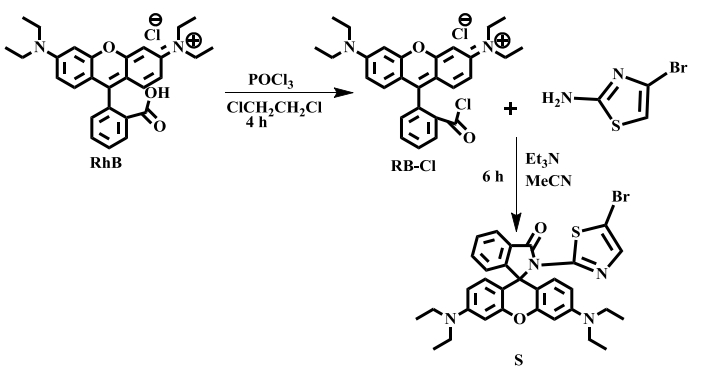
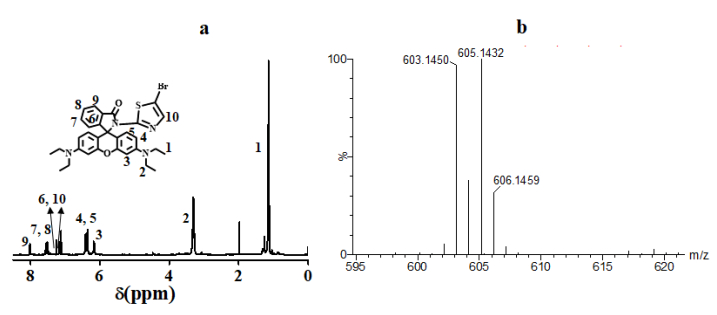
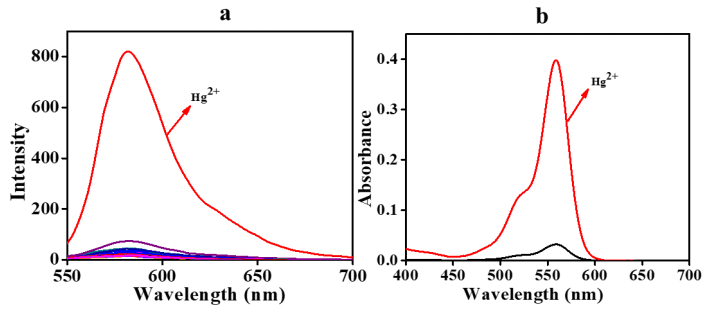
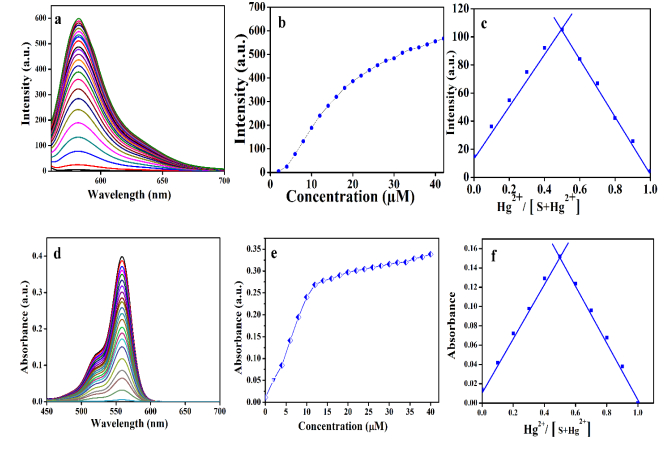
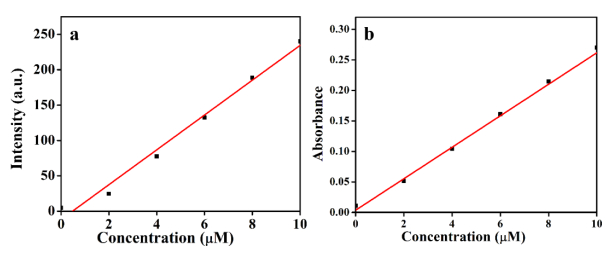
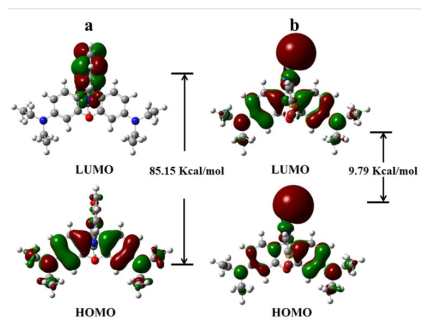
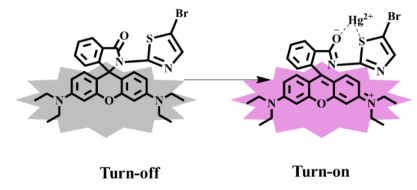
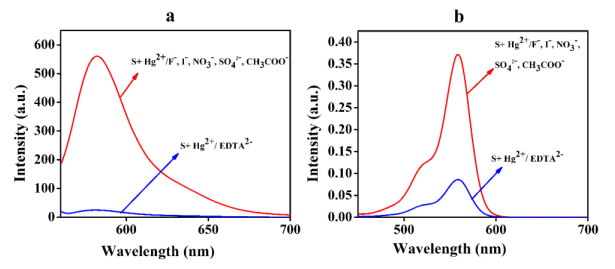
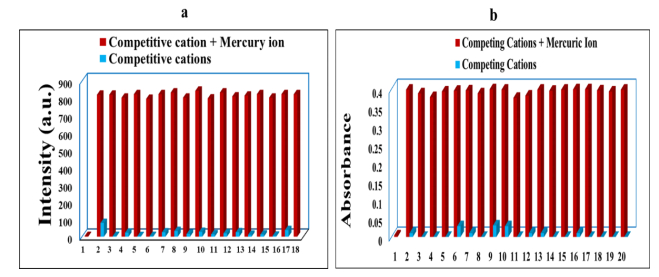
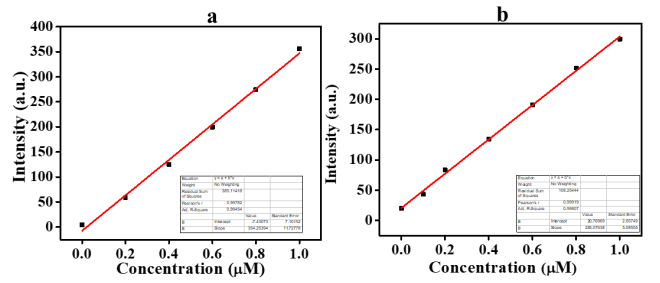


 DownLoad:
DownLoad: